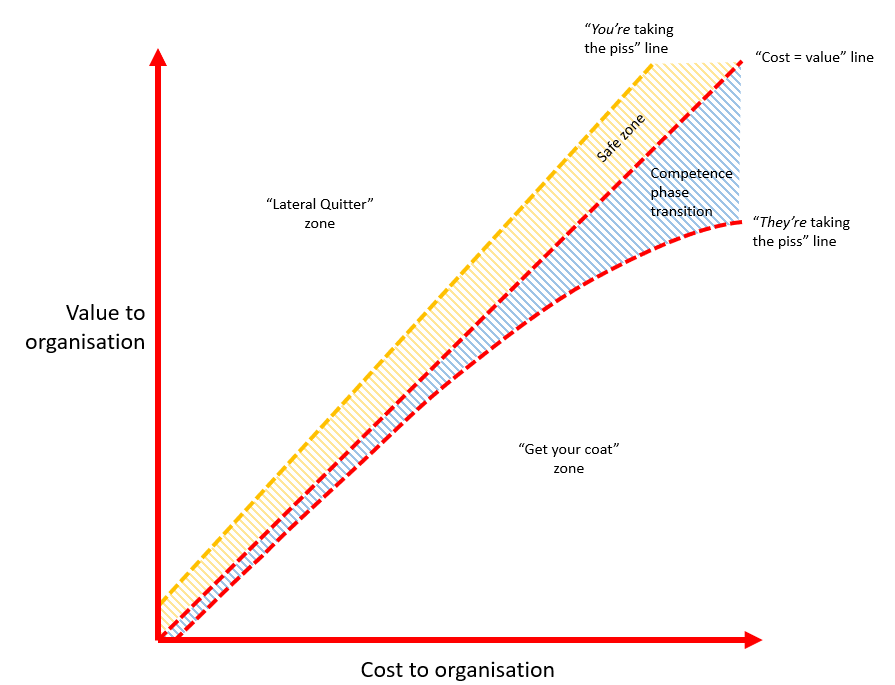Cost-value threshold
|
The Human Resources military-industrial complex
|
Cost-value threshold
(“CVT”) /kɒst-ˈvæljuː ˈθrɛʃˌhəʊld/ (n.)
The cost-value threshold is the point where an employee’s value exactly equals her cost. Quality being relative to cost, good staff sit above this line; bad ones below it.
The “CVT” isn’t scientific. It is hard to quantify the “value” of non-revenue-generating staff, nor is that value stable through time. Some of us get better, some get worse. Contributions wax and wane. It is hard to know why.
Modernist ideology recommends keeping all staff as close to the CVT as possible. Reward those who over-contribute more to bring them into line; pay less to those who come up short.
But practically — given difficulty understanding what these people actually do, let alone how valuable it is, human frailties, mortal weakness, market convention, labour laws and so on — this isn’t possible.
You can’t just pay crappy employees less. Getting rid of them is expensive and risky. Coaching dullards towards better performance requires talent your human resources department is certain not to have. And paying good performers more just because they deserve it strikes against the basic principal of modern human capital management that the reward for loyalty is a discount, not a premium.
So few employees sit exactly at the cost-value threshold.
Most occupy a penumbra either side: a warm “safe zone” above the CVT, where somewhat over-delivering employees can sit happily until their worth has drifted so far into the ionosphere that they are finally bid away, and a cooler, larger “competence phase transition” space below the threshold where marginally net-negative staff can sit, for years, safely plodding along, not really helping, but also without great risk of prejudice, even when a reduction in force comes along.
The different means of exit from this safe zone: voluntary departures from the top, and reductions in force to clear out at the bottom, generates an odd drift towards mediocrity.
